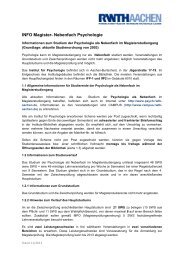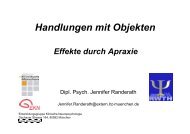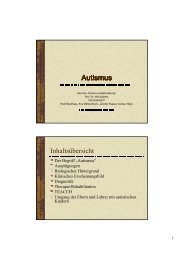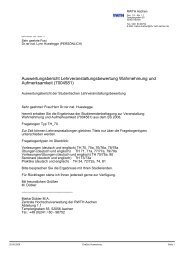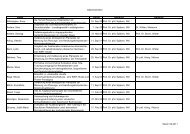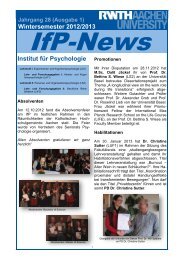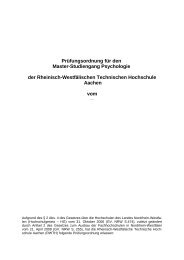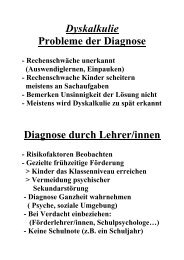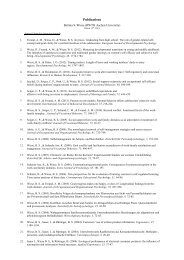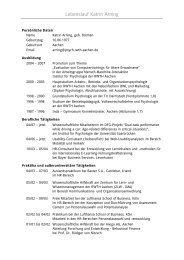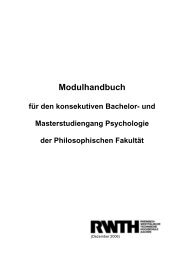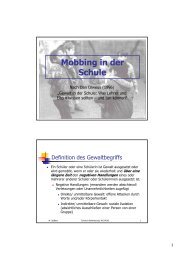Crossmodal Action 1 Crossmodal Action Selection - RWTH Aachen ...
Crossmodal Action 1 Crossmodal Action Selection - RWTH Aachen ...
Crossmodal Action 1 Crossmodal Action Selection - RWTH Aachen ...
You also want an ePaper? Increase the reach of your titles
YUMPU automatically turns print PDFs into web optimized ePapers that Google loves.
<strong>Crossmodal</strong> <strong>Action</strong> 28<br />
Figure Captions<br />
Figure 1. a) Mean RTs for saccades and manual responses in single- and dual-task<br />
conditions in both temporal overlap groups. b) Increase of mean RTs in dual- as compared to<br />
single-task conditions (dual-task costs in ms) for saccades and manual responses in both<br />
temporal overlap groups.<br />
Figure 2. Simplified conceptualization of a central response selection bottleneck<br />
model for the simultaneous performance of saccades and manual responses in the present<br />
paradigm. Information processing in each task consists of three stages: Perceptual Processing<br />
(PP), Response <strong>Selection</strong> (RS), and Response Execution (RE). Since single-task RTs were<br />
generally prolonged for manual responses compared to saccades under otherwise comparable<br />
conditions, we assumed a constantly longer RE stage for manual responses (2 units instead of<br />
1). Note that regarding dual-task costs, the model predicts a strong interaction of temporal<br />
task overlap and effector modality for any given entry probabilities.<br />
Figure 3. A crosstalk model for the simultaneous performance of saccades and manual<br />
responses. Subjects respond to a left stimulus with a leftward saccade and a right manual key<br />
press in the current trial. The curved bridges indicate the binding of response pairs in working<br />
memory. Crosstalk in dual-task blocks results from interference (the lightning bolt) from<br />
alternative stimulus-response patterns of preceding trials (indicated by the dotted lines<br />
activated by a stimulus on the right). Additionally, prolonged RTs in dual-task trials compared<br />
to single-task trials may result from the fact that in dual-task trials, both spatial codes compete<br />
for being mapped to modality codes, whereas in single-task blocks, only one spatial code is<br />
active, eliminating the potential for competition. Note that in this model, the specific mapping<br />
of spatial codes to modality codes does not affect the general crosstalk mechanism, as long as<br />
the (spatial) conflict between responses is the same. Thus, a reversal of the mappings<br />
(affecting temporal task overlap) should not alter dual-task costs.



